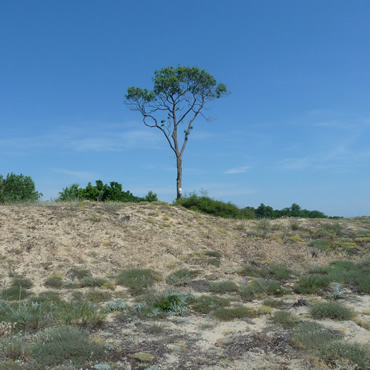csv
Type of resources
Available actions
Topics
INSPIRE themes
Keywords
Contact for the resource
Provided by
Years
Formats
Representation types
Update frequencies
Scale
Resolution
-

-

Thanks to a very sensitive HPLC method which has been validated by the scientific community, the SAPIGH platform is dedicated to the analysis of marine phytoplankton pigments. We can separate and quantify up to 26 different pigments which can be useful bio-indicators, thus characterising a large range of phytoplancton populations.
-

The PROSOPE (PROductivity of Oceanic PElagic Systems) cruise took place from the 4th of September (Agadir, Morocco) to the 4th of October (Toulon, France) 1999 aboard the RV Thalassa. There were four main scientific objectives: - To carry out classical process studies, typical of JGOFS. - To focus on small scale biogeochemical processes, in particular at a daily scale. - To study the influence of nitrogen, phosphorus and iron on oceanic fertility. - To conduct a calibration/validation operation for the SeaWIFS color sensor.
-

The MALINA oceanographic campaign was conducted during summer 2009 to investigate the carbon stocks and the processes controlling the carbon fluxes in the Mackenzie River estuary and the Beaufort Sea. During the campaign, an extensive suite of physical, chemical and biological variables was measured across seven shelf–basin transects (south-north) to capture the meridional gradient between the estuary and the open ocean. Key variables such as temperature, absolute salinity, radiance, irradiance, nutrient concentrations, chlorophyll-a concentration, bacteria, phytoplankton and zooplankton abundance and taxonomy, and carbon stocks and fluxes were routinely measured onboard the Canadian research icebreaker CCGS Amundsen and from a barge in shallow coastal areas or for sampling within broken ice fields. This dataset is the results of a joint effort to tidy and standardize the collected data sets that will facilitate their reuse in further studies of the changing Arctic Ocean.
-

Mise à jour : 06/01/2017
-

Sont diffusés : - les meublés classés Tourisme, Mise à jour : 06/01/2017
-

Concentrations moyennes horaires issues du réseau fixe des mesures européennes des principaux polluants réglementés dans l'air sur la région Sud : dioxyde de soufre SO2, monoxyde d'azote NO et dioxyde d'azote NO2, particules en suspension PM10, particules en suspension PM2.5, ozone O3, benzène C6H6, monoxyde de carbone CO. Toutes les données fournies sont en ?g/m³ (microgramme par mètre cube) sauf CO (mg/m³).
 Metadata catalogue
Metadata catalogue